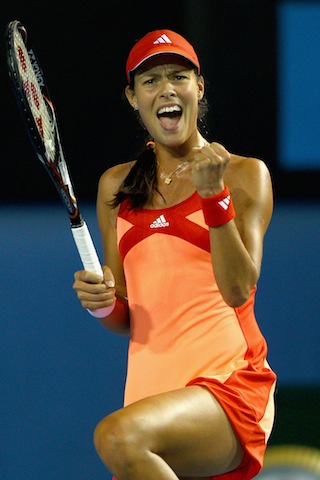500 Sets a Year!
 Friday, June 22, 2012 at 09:23PM
Friday, June 22, 2012 at 09:23PM  CAtennis
CAtennis I tell parents all the time, take one private a week and go play matches. Sometimes I tell parents take one private every two weeks. It's just overkill to do anything more until you reach the higher stages of the game (professional). Players need to be playing 8-10 sets a week, thats where the real learning happens. Tennis is a game of trial and error, not about feeding out of a basket and focusing on technique. Players need to learn how to compete and cope with stress. There is nothing stressful about doing crosscourts for an hour, it doesn't get to the essence of what tennis is...a nasty contest between two people where there is a winner and loser. Black and white. You are judged by the bottom line.
8-10 sets a week is a great benchmark to set. Play with anyone who will play with you. I'm tired of players or parents saying "I won't play with So and So because they push...because they cheat...because they aren't good enough..." All lame excuses! All you are doing is saving the player from the realities of the world. You will play pushers who will make life miserable, do you want me to ask them to stop missing? You will play cheaters who will cheat you on the biggest point of the match. You will play parents who cheer against your double faults. You will play hackers, net rushers, grinders, counterpunchers, flat hitters, dinkers, rabbits- you can't simulate this through drilling or feeding. Simply impossible.
(See Picture)...Djokovic has angled his wrist and changed his grip slightly to somehow, someway, fight his tail off to get this ball back into the court. This can't be duplicated without competing and playing matches where your pride is on the line.

There are no limits on who to play against. Whether you play someone you can defeat 0 and 0, see if you can beat them 0 and 0 coming to the net. Can you beat them 0 and 0 with just a slice? Can you beat them 0 and 0 if you spot them a 30-love lead? There are endless amounts of ways to skin a cat, but the point is to build some pressure into the matchplay to make it worthwhile. The reason people hate to compete is because people hate dealing with uncertainty, the small chance that they put their pride on the line and lose. Yes! You need to be able to handle that kind of pressure consistently, never let your guard down. Its an absolutely necessary skill.
For the parents who protect their kids from playing people below them, your child will never reach its full potential. This is the same player who tanks against players equal to their ability. This is the same player who looks at the parent after every sign of poor play. This is the same player who pouts when a bad line call comes their way. This is the same player who yells, "What a tree!" The coddling needs to stop.
Imagine if you played 10 sets a week for 50 weeks a year? 500 sets! Now compare that to the kid who maybe plays 1 set a week? 50 sets a year. No comparison. I wonder who will win. Doesn't matter who your coach is, doesn't matter if you have a world class trainer, or use the best string. It just won't matter. Get out there and compete, its what makes tennis fun.



